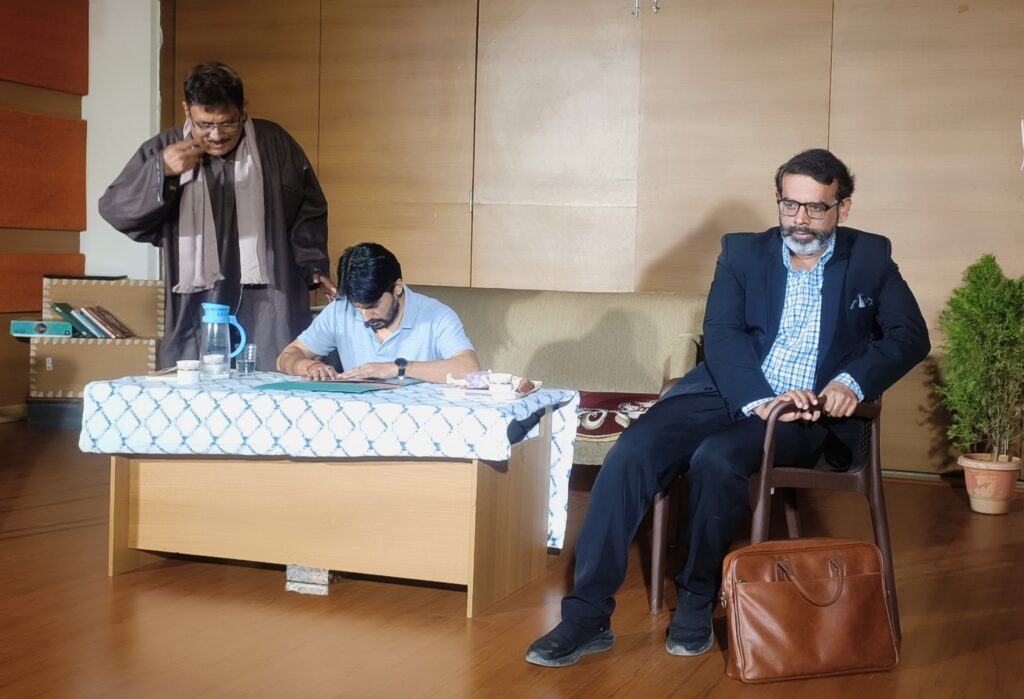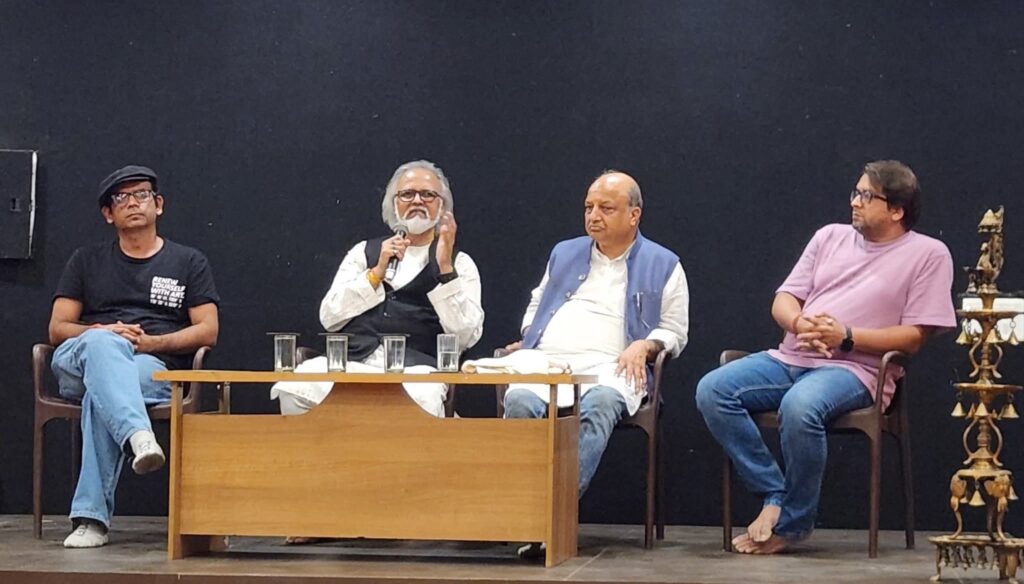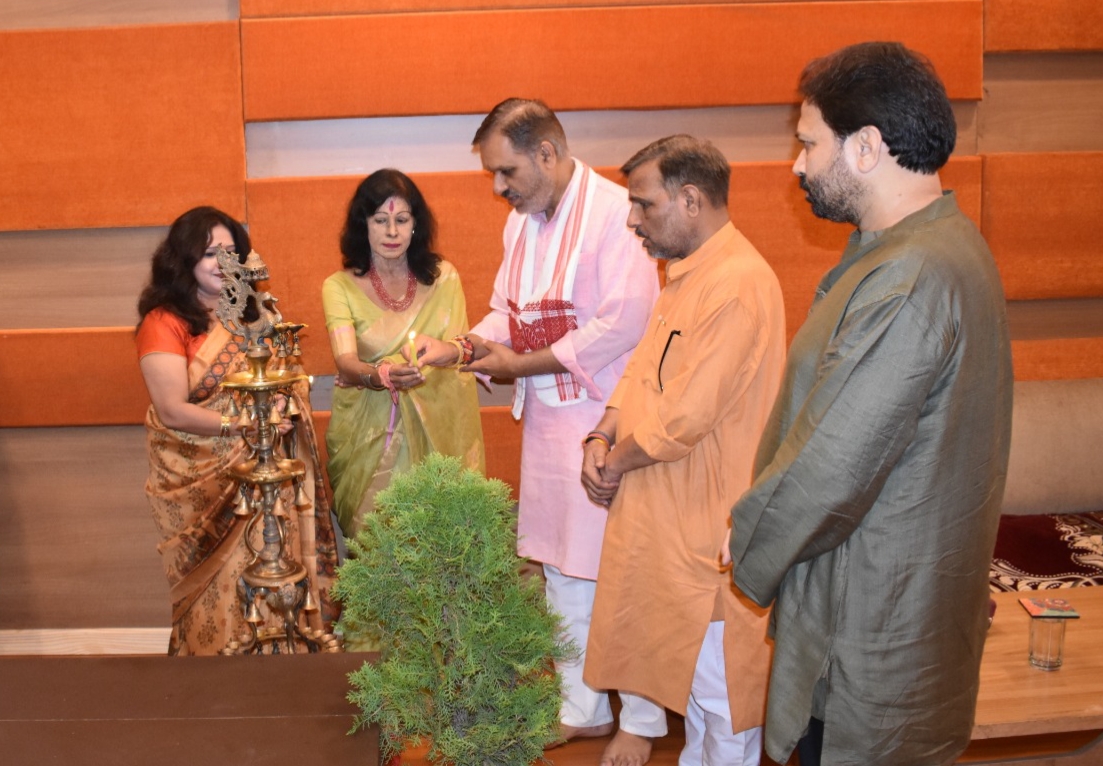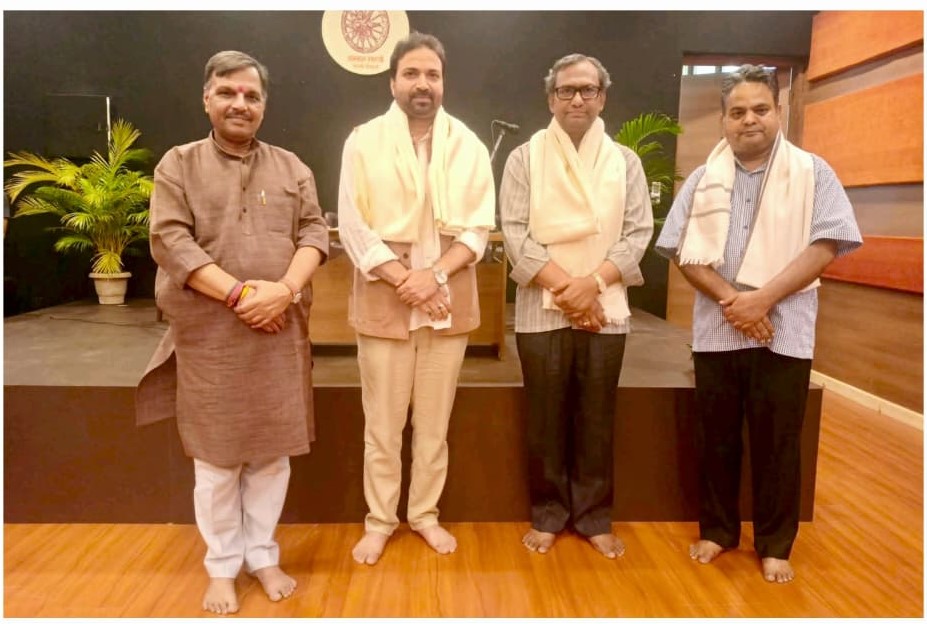Art, Theatre, and Thought: ‘Fireplace’ Captivates Kala Sankul Audience”

Delhi’s cultural landscape comes alive every month, and the last Sunday at Kala Sankul has become a beacon of creativity, where literature, theatre, and thought-provoking dialogue converge. This is not just an event—it is a continuous celebration of artistic consciousness, fostering empathy, conversation, and the resilience of the human spirit. In this ongoing journey, the play “Fireplace” took center stage this month 30th November, 2025, leaving an indelible echo in the hearts of its audience.
The event began with a ceremonial lamp lighting, graced by distinguished guests: Sh Abhijeet Gokhale, Akhil Bhartiya Sangathan Mantri of Sanskar Bharti; Sh. P.K. Mohanti, Registrar of the National School of Drama; Play Director Rohit Tripathi; and Mr. Raj Upadhyay. Their presence lent both dignity and gravitas to the occasion.
Addressing the audience, Sh. Abhijeet Gokhale ji said,
“We must never forget the pain of Kashmir in 1990, yet we must unite to usher in a new dawn.”
His words perfectly mirrored the spirit of the play—acknowledging historical pain while urging hope and collective resilience.
Some plays are simply watched; others are felt deep within. Upstage Art Group’s “Fireplace” belongs to the latter. It masterfully evokes the tragedy of 1990s Kashmir, the displacement, and dreams buried under the ashes of broken homes, touching the audience with raw sensitivity.
Dr. Rajiv Mishra’s script approaches Kashmir’s suffering not with blame, but through the lens of human compassion, truth, and memory. Director Rohit Tripathi’s vision avoids melodrama, opting for a precise, measured, and deeply moving performance. The play’s message is clear: it is not against any community, but a poignant voice for the innocents scorched by violence.
The cast delivered performances that transcended acting. Tripathi’s Baba carried profound grief and hidden fragility; Vipin Jagga as Kaleem Dar embodied calm humanity; Ashutosh Banerjee as Rahul Raina exuded sharp intensity; and Anamika Sagar’s Sarita Dutt portrayed heart-wrenching anguish. Moments on stage blurred the line between performance and audience, drawing viewers completely into the story.
Tripathi’s direction deserves special acclaim. He wove silence into the narrative as a language itself—a silence that struck deeper than dialogue ever could.
The technical team amplified the play’s impact: Parag Sharma’s lighting sculpted mood, Tarun Mishra’s sets created immersive spaces, Naresh Kumar’s music enriched the emotional texture, and Chandrakanta’s costumes added authenticity and depth.
The event’s seamless execution owed much to volunteers Shyam Kumar, Mun Mun, Sneha Mukherjee, Harshit Goyal, and Pradeep Pathak, while stage management by Vishwadeep ensured elegance and precision. Raj Upadhyay delivered the vote of thanks, and the evening concluded with a serene chant, marking a dignified and unforgettable cultural experience.
“Fireplace” was more than a play—it was a journey into memory, grief, resilience, and hope, resonating long after the final curtain fell









